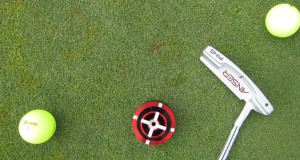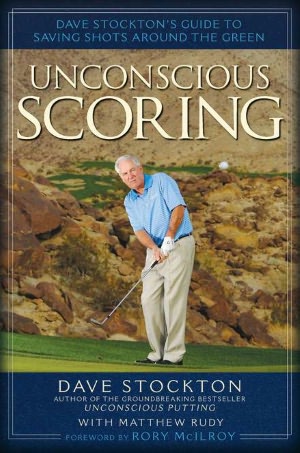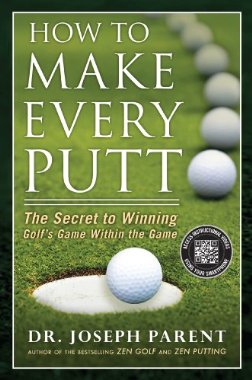In the latest issue of one of the leading golf magazines, you will see a putting instruction tip with the following title: Accelerate to sink more putts.
In the piece, the featured instructor advises that you “accelerate through impact.”
Thirty pages late in the same issue, however, another article features a leading putting instructor, who says, “The best strokes reach top speed before impact and maintain that pace through the hitting zone… So thinking ‘accelerate through’ can hurt you.”
We don’t mention this to knock the magazine, but rather to simply use it as a vivid illustration of the varied beliefs regarding perfect putting stroke.
Here you have two instructors who are accomplished enough to be featured in a leading golf magazine, and yet they are offering completely oppositional advice.
This is nothing new, as there have always been different schools of thought on virtually all aspects of the putting stroke.
For example, in another golf magazine this month, Jack Nicklaus advises that you get your eyes directly over the starting line of the putt—a concept that several of today’s top instructors refute. Indeed, Pat O’Brien and Stan Utley say that your eyes should be slightly inside the starting line.
Nicklaus also reveals that he employed different types of strokes during his career, stating, “I didn’t know which stroke I would use until I got to the tournament venue and checked the green conditions.” Whoa! Kids, don’t try that at home.
So what does all of this mean? It’s really just a reminder that putting is an art as well as a science.
In the new book The Stack & Tilt Swing (which is not a putting book, but rather a book on the full golf swing), the authors talk about the difference between so-called “fundamentals” and what they call “preferences.” They make the point that the former is often actually the latter when it comes to the full swing, and the same could probably be said for the putting stroke. Sometimes a “fundamental” is really just a preference.
So where does that leave us? Do we just each do whatever we want and make it up as we go along? No. Just because there is no single “way” to putt, that doesn’t mean that there isn’t a better “way” when it comes to your particular game.
The best option is to simply be acutely aware of the different schools of putting thought, and to find your own “way” within them. Through trial and error, you will find an approach that works for you.
From there, you can begin to strategically build your putting game, settling on mechanics that work for you and practicing your game within the framework of those mechanics (and finding a putter that fits those mechanics as well).
If this sounds complicated, it’s because it is a bit complicated. Nothing in golf comes easy—but a little knowledge and a thirst for discovery can go a long way toward raising your game.
P.S. What are your thoughts on this subject? Have you had a personal experience that would shed some light on it? If so, please comment!
 PutterZone – Best Putter Reviews
PutterZone – Best Putter Reviews





My $.02 on the subject: The biggest faults that I have seen are 1) wrists hinging, flipping, breaking down at impact and 2) the putter head stopping or slowing at or prior to impact. If you watch the majority of good putters (take a look at TW's stroke) there is some commonality, 1) the putter head usually travels on an arc that naturally fits their stance, posture and 2) the wrists stay locked through the entire stroke. Get these two fundamentals dialed in then start to work on your alignment. It helps if your shoulders, at a minimum are parallel to the intended target line, then pick a line, trust it and stroke the putt.
Good advice, I'm buying it!
In the latest issue of Golf Digest, Steve Stricker says he subscribes to the straight back / straight through stroke as opposed to an arc, showing that there are some high-profile holdouts on that front.
This (arc versus straight back) is a never ending discussion. Check out this link to see a demonstration on the putting stroke using a robot and laser. Video was done as a research project at Campbell University. I think you will find it interesting.
http://www.youtube.com/watch?v=wpoSF6QPW3w
As a newish golfer, I find that I putt best when I just feel it. For me it is all about the moment. As soon as the brain goes "wrists, shoulders, arc, sbst," then I miss the putt. I enjoy the afternoon much more when I just make the read and make the putt go. Maybe some mechanics lessons could help here, but my swing has so many mechanical thoughts that it is nice to line it up with the Byron and let it go when it feels right…
Great point, Sactown. It can be hard to find a healthy balance between mechanics and execution. When it comes to execution, you don't want to be bogged down by thoughts about mechanics.
That's the thing about what I call "instruction porn" in the magazines, especially when it's contradictory, as noted here. It can become brain clutter.
As long as you can consistently get the face square to the target line at impact, you're in business.
Sometimes I start thinking about my arc, then I say to myself, why? The arc will take care of itself if I perform a sound, natural stroke!
Tiger says he thinks of his putting stroke as if he's trying to hit a draw / Stricker says straight back & through … every other pro has a varied viewpoint ( look at Phil ). In reality Stricker isn't really making a perfect pendulum stroke / Tiger isn't coming from the inside as much as he thinks / Phil's putter loft is adjusted to compensate for his forward pre stroke hinge. It's really all about individual PERCEPTION and personal body biomechanics. I could go on and say the practice, practice, practice are the only fundamentals in putting but I would rather leave all of you with this. The stroke you want to develop is one that works best for 'cold' putting … meaning not the stoke that works after you've warmed it up during a practice session ( and you can't miss ) but the stroke that works when your actually playing & only get one or two attempts before bogey. Knowing the difference will open up a new world to you.